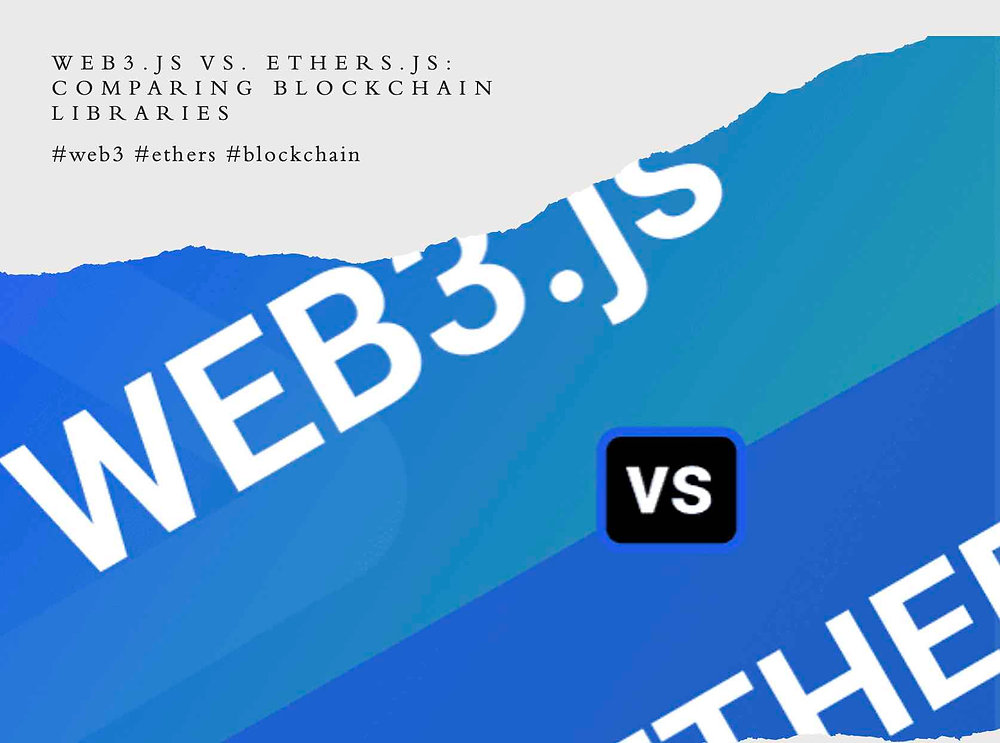In the realm of Ethereum development, a library is not just a tool—it’s the backbone of efficient and secure applications. Ethereum, being the birthplace of smart contract technology and decentralized applications (DApps), has a growing ecosystem. Within this realm, two libraries have emerged as central figures: Web3.js and ethers.js. This article dives deep into a comparative analysis of these libraries, exploring their features, strengths, weaknesses, and the ideal use cases for each. Looking to diversify your digital assets? Ethereum is currently making waves in the crypto world, and the Ethereum iFex Ai allows for seamless purchases.

Background: Why Libraries Matter in Ethereum Development
Ethereum’s ecosystem is vast and complex, making the role of developer libraries crucial. Libraries act as intermediaries, facilitating interactions between DApps and the Ethereum blockchain. They translate high-level language commands into actions on the blockchain, simplify intricate processes, and save developers hundreds of hours. Furthermore, the reliability of a DApp often hinges on the reliability of the underlying library.
Web3.js: The Pioneer Library
Historical Context: Web3.js isn’t just another library; it’s symbolic of the early days of Ethereum development. As the Ethereum community grew, Web3.js was often the first stop for developers eager to connect their applications to the Ethereum blockchain.
Key Features:
- Connectivity: Web3.js allows applications to connect with Ethereum nodes using various protocols like IPC, WebSocket, and HTTP.
- Contract Interactions: With Web3.js, developers can deploy new contracts, call contract methods, and read contract states with relative ease.
- Account Management: It provides functionalities like estimating gas, signing transactions, and generating accounts.
ethers.js: The Modern Contender
Origins: While Web3.js was catering to the growing Ethereum community, some developers felt the need for a library that was more lightweight and modular. Enter ethers.js.
Key Features:
- Lightweight Nature: Unlike Web3.js, which can sometimes be bulky, ethers.js offers a compact package that often results in faster load times.
- Modularity: With ethers.js, you can load only the components you need, making it a favorite for applications that aim to be lean and efficient.
- Enhanced Security: ethers.js prides itself on being a library that takes security seriously. It offers extensive features for managing and encrypting wallets.
Comparative Analysis: Web3.js vs. ethers.js
- When it comes to performance, Web3.js can sometimes be perceived as heavy due to its comprehensive nature, which includes a plethora of functionalities. On the other hand, ethers.js is known for its lightweight nature, offering faster performance, especially in specific operations where speed is paramount.
- From a security perspective, Web3.js has proven reliable over the years, although it has encountered some vulnerabilities in the past. Ethers.js, however, prides itself on its robust security mechanisms, making it a go-to choice for developers particularly concerned about ensuring the safety of their DApps.
- Considering the ease of use, newcomers to the Ethereum development world might find Web3.js has a moderate learning curve. Ethers.js, with its modular architecture, is relatively easier to grasp, especially for those who appreciate being able to select only the components they require.
- Regarding community support, Web3.js boasts an extensive history, having been in the ecosystem for a longer period. This has resulted in a wealth of resources, tutorials, and a broad community ready to assist. Ethers.js, though newer, is witnessing rapid growth in its community, backed by dedicated forums, discussions, and enthusiasts who appreciate its modern approach.
- Lastly, in terms of interoperability, Web3.js, being a more mature library, is compatible with most Ethereum tools. However, its comprehensive nature can sometimes make it cumbersome in specific applications. Ethers.js, designed to be tree-shakable and modular, shines in its ability to seamlessly integrate with various tools and platforms within the Ethereum ecosystem.
Use Cases: Best Scenarios for Each Library
Web3.js:
- Legacy Projects: Older Ethereum projects that started with Web3.js might find it easier to continue with it.
- Comprehensive Applications: For applications that need a wide range of functionalities, Web3.js can be more fitting due to its exhaustive features.
ethers.js:
- New Projects: For projects starting from scratch, ethers.js offers a more modern approach with its modular structure.
- Performance-Critical Applications: DApps that prioritize fast load times might benefit more from the lightweight nature of ethers.js.
The Future: Development Roadmaps & Community Perspectives
Both Web3.js and ethers.js are under active development with roadmaps promising innovative features. Web3.js plans on refining its architecture, while ethers.js aims to introduce more functionalities without compromising on its lightweight nature. The developer community’s sentiment leans slightly towards ethers.js because of its modern approach, but Web3.js still has a significant user base that values its legacy and comprehensive nature.
Conclusion
Choosing between Web3.js and ethers.js isn’t a matter of one being better than the other universally. Instead, it’s about which one aligns more with the specific needs and goals of your project. As the Ethereum ecosystem continues to evolve, staying updated and understanding the capabilities of each library will be paramount for developers. The journey of Ethereum development is vast and intricate, but with the right tools, it can also be incredibly rewarding.